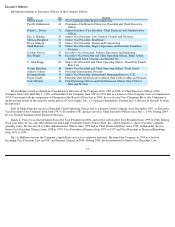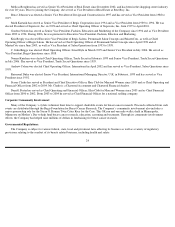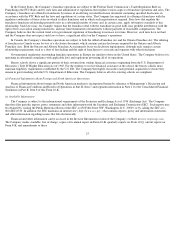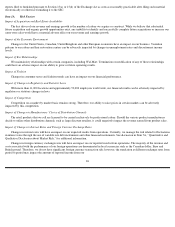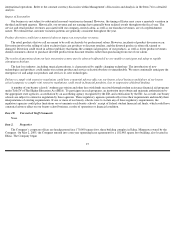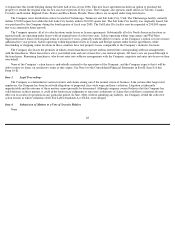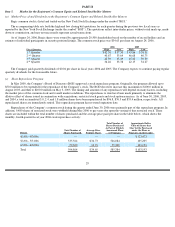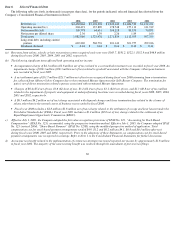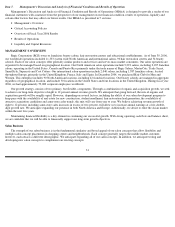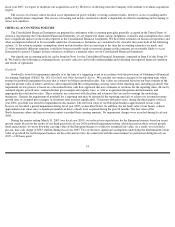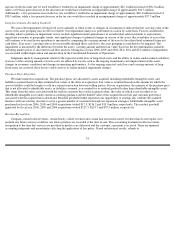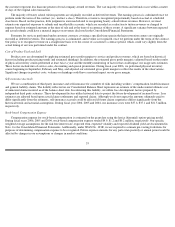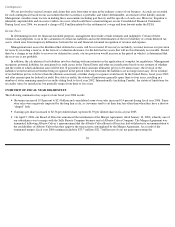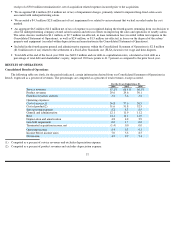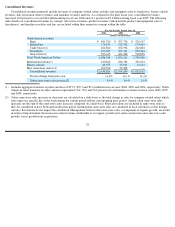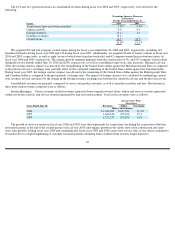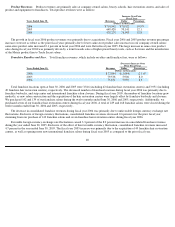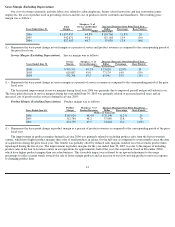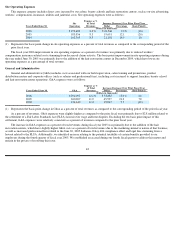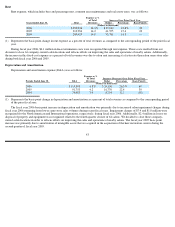Supercuts 2006 Annual Report Download - page 34
Download and view the complete annual report
Please find page 34 of the 2006 Supercuts annual report below. You can navigate through the pages in the report by either clicking on the pages listed below, or by using the keyword search tool below to find specific information within the annual report.
fiscal year 2007, we expect to moderate our acquisitions activity. However, in the long-term the Company will continue to evaluate acquisition
targets.
The success of a beauty school location is not dependent on good visibility or strong customer traffic; however, access to parking and/or
public transportation is important. The success of existing and newly constructed schools is dependent on effective marketing and recruiting to
attract new enrollees.
CRITICAL ACCOUNTING POLICIES
The Consolidated Financial Statements are prepared in conformity with accounting principles generally accepted in the United States of
America. In preparing the Consolidated Financial Statements, we are required to make various judgments, estimates and assumptions that could
have a significant impact on the results reported in the Consolidated Financial Statements. We base these estimates on historical experience and
other assumptions believed to be reasonable under the circumstances. Estimates are considered to be critical if they meet both of the following
criteria: (1) the estimate requires assumptions about material matters that are uncertain at the time the accounting estimates are made, and
(2) other materially different estimates could have been reasonably made or material changes in the estimates are reasonably likely to occur
from period to period. Changes in these estimates could have a material effect on our Consolidated Financial Statements.
Our significant accounting policies can be found in Note 1 to the Consolidated Financial Statements contained in Item 8 of this Form 10-
K. We believe the following accounting policies are most critical to aid in fully understanding and evaluating our reported financial condition
and results of operations.
Goodwill
Goodwill is tested for impairment annually or at the time of a triggering event in accordance with the provisions of Statement of Financial
Accounting Standards (SFAS) No. 142, Goodwill and Other Intangible Assets . We consider our various concepts to be reporting units when
testing for goodwill impairment because that is where we believe goodwill resides. Fair values are estimated based on our best estimate of the
expected present value of future cash flows and compared with the corresponding carrying value of the reporting unit, including goodwill. Our
impairment review process is based on a discounted future cash flow approach that uses estimates of revenues for the reporting units, driven by
assumed organic growth rates, estimated future gross margin and expense rates, as well as acquisition integration and maturation, and
appropriate discount and tax rates. These estimates are consistent with the plans and estimates that are used to manage the underlying
businesses. Charges for impairment of goodwill for a reporting unit may be incurred if the reporting unit fails to achieve its assumed revenue
growth rates or assumed gross margin, or if interest rates increase significantly. Consistent with prior years, during the third quarter of fiscal
year 2006, goodwill was tested for impairment in this manner. The net book value of our European business approximated its fair value
because we recorded a partial impairment during fiscal year 2005, as described below. In addition, the net book value of our beauty schools
approximates fair value since a significant number of those schools were acquired during the past 24 months. The fair value of the
North American salons and hair restoration centers exceeded their carrying amounts. No impairment charges were recorded during fiscal year
2006.
During the quarter ending March 31, 2005 (our fiscal year 2005), we reduced our expectations for the European business based on recent
growth trends. Based on the results of our third quarter fiscal year 2005 goodwill impairment testing, which factored in these revised growth
trend expectations, we wrote down the carrying value of the European business to reflect its estimated fair value. As a result, we recorded a
pre-tax, non-
cash charge of $38.3 million during fiscal year 2005. Two of the most significant assumptions underlying the determination of fair
value of goodwill for our European business are discount and tax rates. In connection with the measurement we performed during fiscal year
2005, a 100 basis point
33


